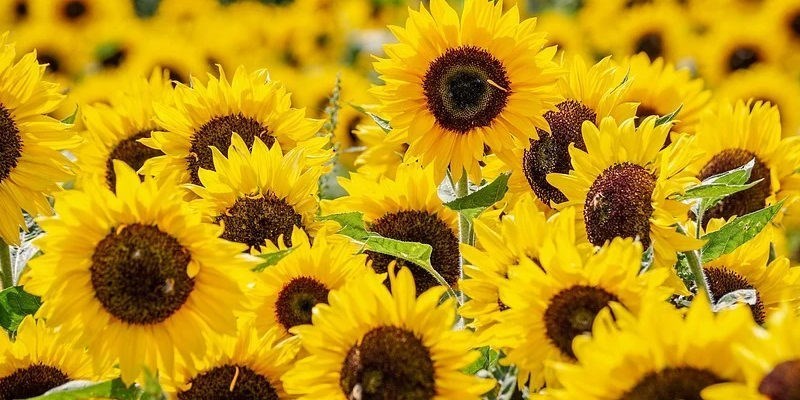Into the Garden - July 2022
Summer is a gardener’s favourite time of year! It’s a time to get outside in the sunshine and enjoy the hard work that you’ve put into the garden throughout the seasons. The main jobs in July are general garden maintenance and adding care and support for plants, to keep flowers blooming for the rest of the summer. Deadheading flowering plants is also a key part of keeping the garden colourful for the rest of the summer!

How to Keep Flowers in Bloom
As the seasons progress, flowers will bloom and the once bright flower heads will eventually die back. Plants may go to seed if you leave deadheads on the plant. One sure-fire-way to prolong flowering is to regularly remove any dead flowers. This process is often referred to as ‘dead heading’.
Simply take a pair of garden scissors or secateurs and cut just below the dead flower. By removing it, you encourage the plant to direct its energy to new buds and producing leaves. However, you should check individual varieties of flowering plants as some need to self-seed, and premature dead heading can prevent this.

Plants that thrive from dead heading:
Plants to avoid dead heading:

Plant Support
Throughout the summer season, flowers may need some additional support to keep them looking their best. There are many ways to give plants a helping hand, but the easiest way is to use plant supports. Benefits of supporting plants include; keeping fruit away from the ground, reducing the chance of rot or stopping a plant from falling over and snapping because of excess weight.
There are many varieties of plant supports available. The most common types are cages, hoops and trellises. Here are our recommendations for the type of support you need for different types of plant: Ring supports: tall cosmos, dahlias, delphinium, phlox, rudbeckia, peonies
Linking supports: crocosmia, lupins, lavender

Deterring Pests from Plants
Aphids
These tiny garden pests (often green, black or brown in colour) can cause detrimental damage to plants and flowers. Aphids feed on nutrient-filled sap from plant stems and are often found in large clusters.
Aphids multiply at a fast rate, meaning that they can quickly cause large amounts of damage to a plant. Symptoms of aphid damage are yellow leaves, stunted grown, rotting stems and deformed flower production.
To get rid of aphids and prevent them from returning, try using a chemical pesticide. Pest sprays such as Bug Clear Ultra kill live aphids and eggs. A plant absorbs the chemicals and kills any that come back to feed later.
Caterpillars
This little critter can wreak havoc in newly planted beds and borders! Caterpillars feast on fresh leaves and foliage, resulting in bare plants. Caterpillars have been known to eat plants all the way to the base!
Even though caterpillars do not cause permanent damage to a plant, they can damage the overall appearance of the plant. Try not to worry if your plant gets eaten by caterpillars. Foliage will grow back, perhaps even stronger than before!
To prevent caterpillars from attacking your garden, you can either hunt through foliage, using gloves to remove them, or take more proactive measures. By covering susceptible plants with barrier mesh or netting, you can stop caterpillars from getting anywhere near the plant.
Slugs and Snails
These slimy inhabitants feed on healthy foliage, fruit and seedlings, leaving a sticky residue in their wake. Slugs and snails have the ability to completely destroy multiple plants, eating away foliage right down to the soil!
These nasty pests don’t like to travel over rough substrate. To keep your plants safe from slugs and snails, you can deter them by surrounding plants with crushed egg shell or gravel. Try using copper tape on potted plants to keep slugs and snails away. Wrap the circumference of the pot in a strip of copper tape to discourage them from reaching the plant. Slugs and snails get a small shock when they move over this electricity-conducting tape!







